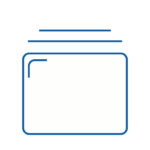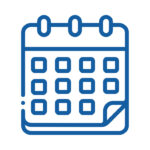LEADING THE WORLD IN VACUUM GLASS TECHNOLOGY
280,000 sqft
Factory area
1,800 m2
Production per day
42
Number of IP rights
3.6 m x 2 m
Max size of a single piece of Vacuum Glass

Superior Thermal Insulation Performance

Superior Sound Proofing Capabilities

Prevents Condensation

Light and Durable

Long Life Span

Prevents Infrasound

An Introduction
Werkman Tech is a global company and leads the world in vacuum insulated glass technology, significantly shaping the future by continually transforming industry standards with new component additions and advancing manufacturing techniques. Our vacuum glass operational hub covers 280,000 sqft, with a daily capacity of 1800 m2 of vacuum insulated glass units.
Our world-renowned research and development department, led by our Scientific Director Liam Liu, continually pushes the boundaries of vacuum glass technology and forces us to keep inventing new manufacturing techniques.
As well as leading the world with our standard vacuum insulated glass ranges, we also specialize in oversized units and irregular shapes and are the only manufacturer of both flat and curved vacuum insulated glass units. We are continually pioneering new techniques such as micro pillars, sharp turn metal welded edge joints and our unique low temperature sealing technology, which has successfully solved the problems of tempered/toughened glass annealing during production, and results in a much higher vacuum than competitors, and an even longer life span.
As well as standard vacuum units we have pushed the boundaries of technology and added a PV Solar Vacuum Range, which is basically glass that makes electricity, an Electrochromic Vacuum Range to eliminate solar radiation and room over-heating in summer, and finally our Radiator Vacuum Range, which is a thermostatically controlled glass heating system that will heat your home for free when coupled with our PV Solar Range.
All of our vacuum glass options are complemented by our GVG window and door systems, patio and sliding door systems and curtain walling and façade system. Our ranges are the most advanced systems in the world with a combined Ug + Uf value as low as 0.64 W/m2K for our windows and a Ucw Value of 0.7 W/m2K for our curtain walling. All of our products gained Passive House Institute certified component status in Germany, and in 2019 our GVG90 system was the winner of the prestigious Component Special Award at the 23rd International Passive House Conference.
A BRIEF HISTORY OF VACUUM INSULATED GLASS AND HOW IT IS MANUFACTURED.
In the late 1800’s the scientific community were all considering the idea of flat vacuum glazing. During this time, in 1892 James Dewar invented the vacuum flask using brass cylinders, as a result of his work in Cryogenics, and proved the thermal qualities of a partial vacuum.
The concept of flat vacuum insulated glass units was first described and drawn up in the 1913 A Zoller Patent. The failure to produce a vacuum unit at the time fell to the fact that no-one could make an edge seal to maintain a vacuum.
Vacuum glass remained only a concept, and in 1987 Professor Richard Collins from the University of Sydney attended a Solar Energy conference in Hamburg, Germany. There, he learned of this edge issue from Dr Gunter Ortmanns. Prof Collins background is electronics where vacuum valves are used and made from solder glass for a hermetic seal.
Back at the University, Professor Collins started to look at the concept of vacuum glass and introduced solder glass to the edge problem. On the 2nd June 1989 he made the very first basic vacuum glass unit. With his colleague Professor Cenk Kocer they continued to advance the concept introducing pillars and in August 1990, they made an A4 sized sheet of vacuum insulated glass with 50mm spaced pillars and a solder glass edge joint. VIG was born and the first units achieved a U value of 1 W/m2.K.
The NSG Pilkington Group from Japan were the first and only company to show commercial interest at the time and working together with Profs Collins and Kocer, the first commercial VIG units hit the market in late 1995/6.
In 2004 a Chinese company Synergy teamed up with the professors and VIG production spread to China. In the following years other companies have taken up the challenge of manufacturing VIG units, including Werkman Tech and advancements are being made regularly. Werkman Tech have been leading vacuum manufacturing designs and advancements and over the years we have pushed ourselves to the fore-front and hold 42 worldwide vacuum technology patents and many production line invention patents. We are currently the only manufacturer of curved vacuum glass, PV Solar vacuum glass, radiator vacuum glass and electrochromic vacuum glass units.
Vacuum Glass Specifications
4mm TL + 0.15v + 4mm T | 5mm TL + 0.15V + 5mm T
6mm TL + 0.3v + 6mm T | 8mm TL + 0.3v + 8mm T
Centre pane U Values from 0.452 W/m2K
· Port Free up to 2.7m2
· Maximum size 7.2m2
· Minimum size 185mm x 185mm
· All units are toughened glass
· Choice of semi-transparent ceramic or steel micro pillars
· Choice of structural layout grids
· Choice of powder glass or metal welded edge joints.
· Low Temperature Edge Sealing
· Shapes and circles available
· Flat and curved vacuum units available
· Weighted sound reduction from 39dB upwards
· PSi edge values from 0.05496 W/mK
· K value from 1
· SHGC-G values from 0.34
Our units have the lowest single low E coating insulated unit U values in the world at 0.452 W/m2K.
Our units have the least visible structural pillar systems in the world, being at least 40% less visible than any competitor.
Our units have the longest life expectancy in the world.





PV SOLAR Vacuum Glass
RADIATOR VACUUM GLASS
ELECTROCHROMIC VACUUM GLASS
In these fast-changing times, where advancements are made before you can blink, we have made giant leaps forward in the technology race and can now turn your windows into clear solar panels. You might want to sit back for a moment, and let that sink in.
That’s right, the glass in the photo is our PV Solar glass and can achieve up to 80% of the electrical generating efficiency of a standard solar panel. Let us try and explain how it works.
Sunlight is composed of visible spectrum and infra-red rays. When they pass through our Solar glass, it is illuminated on the glass assembly with 70% of the visible light entering the room. At the same time ultra-violet and infra-red beams hit our special refractive light path where they are then absorbed by photovoltaic cells with more than 90% luminous flux and converted into electrical energy which can be used, stored or sold back to the grid.
We couple our Solar glass into a vacuum unit to achieve the best U value, 0.4 W/m2K, which can then be mounted in our GVG90 range or any other suitable frame, such as a conservatory roof for domestic use, large green houses for agriculture or in a glass envelope for a skyscraper for large construction projects.
While the rest of us sleep our R & D department never stop and, led by our Science Director Liam Liu, have invented Radiator Vacuum Glass.
Don’t confuse this with warm glass, our units will heat at up to 70 degrees just like your household radiators and they are thermostatically controlled, too.
Just like in your home you set the temperature and our Radiator glass will keep your rooms at that exact temperature.
What’s more, and this is the really ingenius part, when coupled with our PV Solar Vacuum units you can heat your home for free.
It the heat of summer rooms can turn into a sauna through solar radiation. No standard glass insulated unit can stop this phenomenon unless a solar film is added, but our Electrochromic Vacuum Units can.
We send electricity through an invisible system in the glass and it turns to any colour we choose and blocks out solar radiation and acts as a privacy screen.
Window & Door Systems
Every year window and door companies shout about their advancements in design and impressive U values, but what is the reality? Standard aluminium or UPVC frames, no matter how many air pockets or thermal breaks they claim, will still have a U value of around 2.0 Wm2K. The best triple glazing on the planet will have a U value of 0.53 W/m2K, which is great, and gives a superb U value on a 1m2 fixed window. However, the moment you add casements and openers, the more frame is required and the higher the total window U value rises. Another consideration is will it be draft proof? Yes, it should be. Will it be around in 40 plus years? The frame yes, if it’s really good quality, but the triple glazing answer is no, that will have been changed at least twice to maintain the U value.
So how do we improve on that while creating a greener product and a better world?
That was our problem back in 2012, and our answer was our GVG ranges of windows and doors. Because we already had our vacuum glass with a U value of 0.48 W/m2K as standard, we just needed the right frame to put it in. We looked around but none were good enough for our vacuum units, so we designed our own.
Firstly, we decided that draft proof wasn’t good enough, we wanted it to be airtight with four separate gasket barriers and a locking system that pulls in. Next a U value of 2.0 wasn’t good enough either, we needed a super insulated frame to reduce the U value down to 1.0 W/m2K. With security, we wanted a very high level of protection, to guard against experienced burglars using power cutting tools and drills, so we designed an RC 3 security level locking system, which means it would take a professional burglar up to 20 minutes to break in.
Finally, and most importantly, it had to take our super thin vacuum insulated units yet also accept our much thicker PV Solar Vacuum and Hybrid units, so we designed a multi-jamb trim system to suit all options.
Put together we had come up with the Werkman GVG90. We sent it for testing at the Passive House Institute and received a certified U value as low as 0.66 W/m2K for the entire window. Our system became a Passive House Institute certified component in 2019 and we were also the winner of the prestigious Component Special Award at the 23rd International Passive House Conference.
Since then, we have added other GVG window and door systems and also our GVG Curtain Walling and Façade System, all gaining Passive House Institute certified component status with our vacuum glass and Hybrid units. We have priced our GVG systems to price match any good quality aluminium window or door, even though it will far out-perform all other window and door systems sold in the UK.

